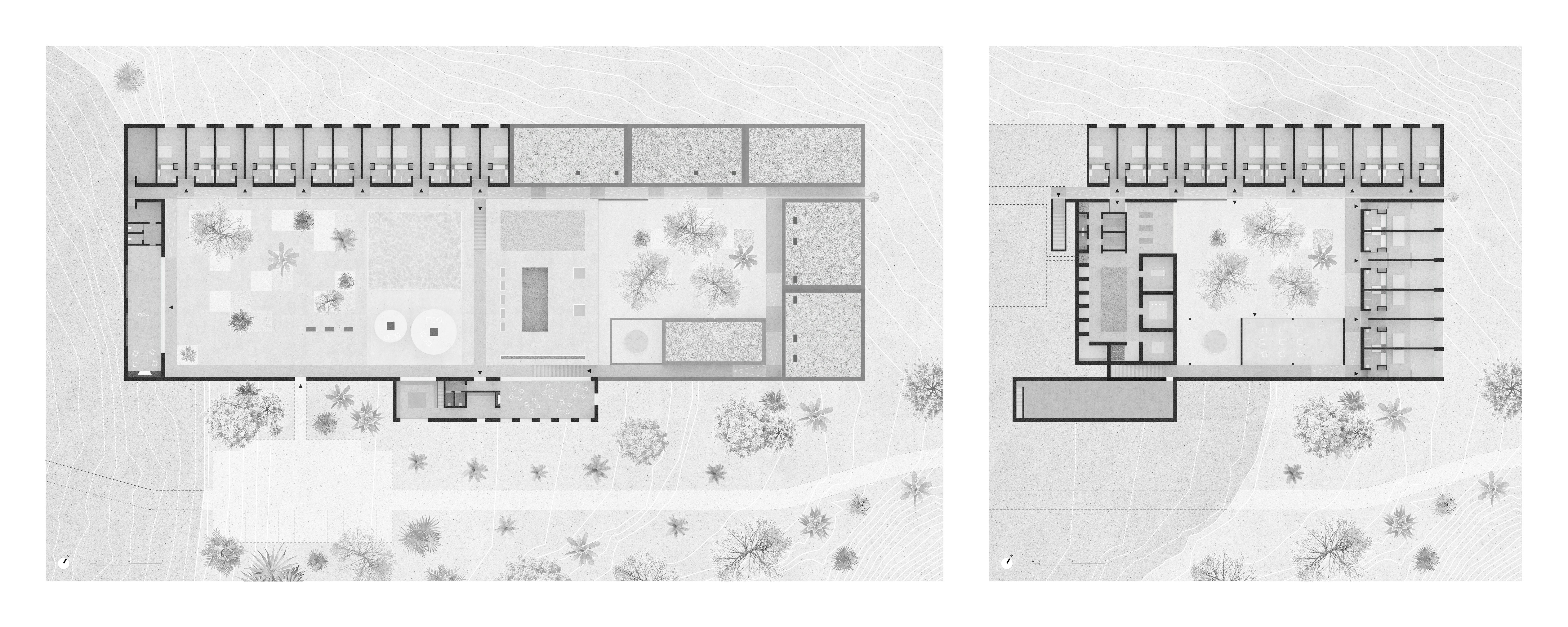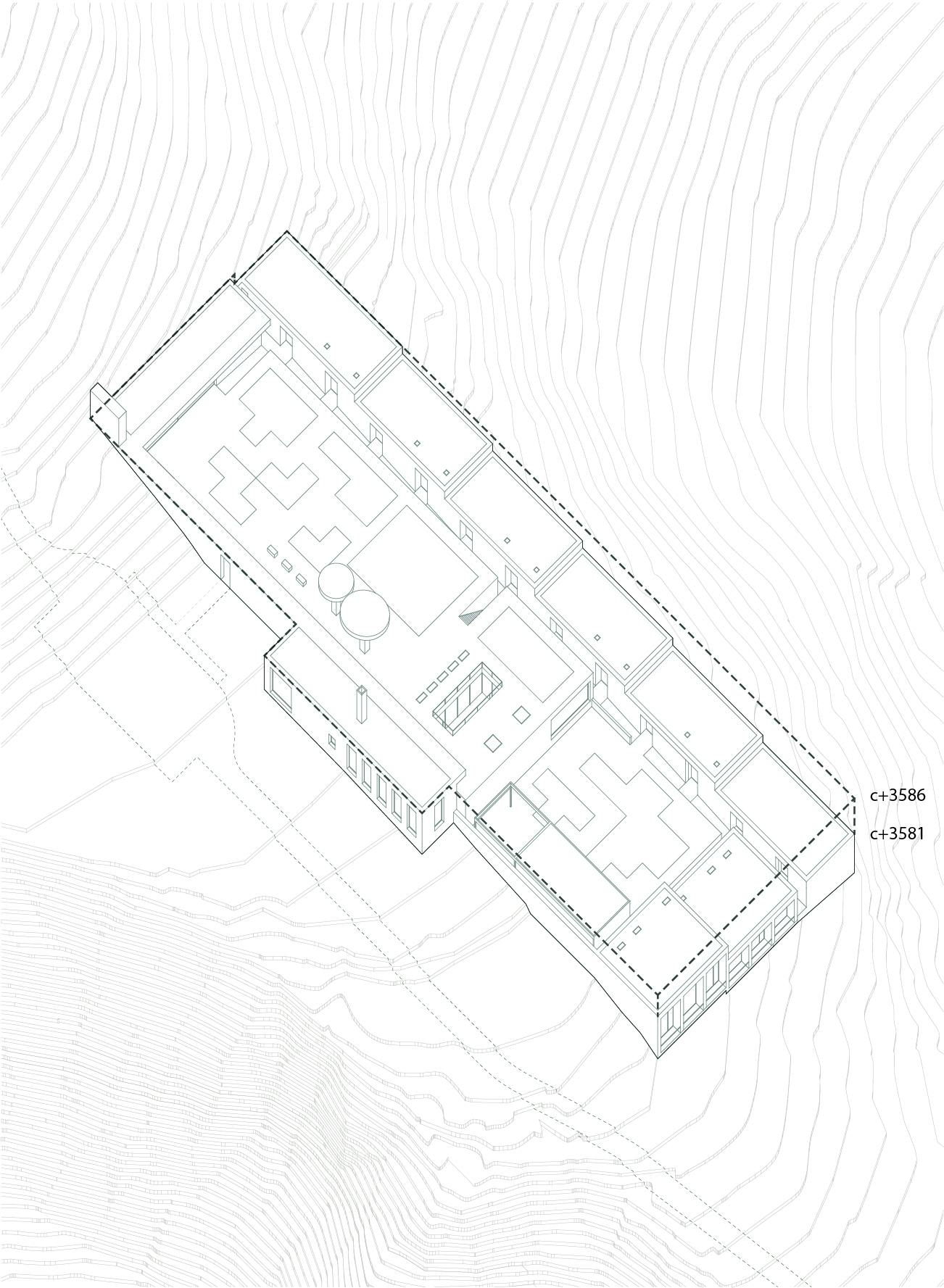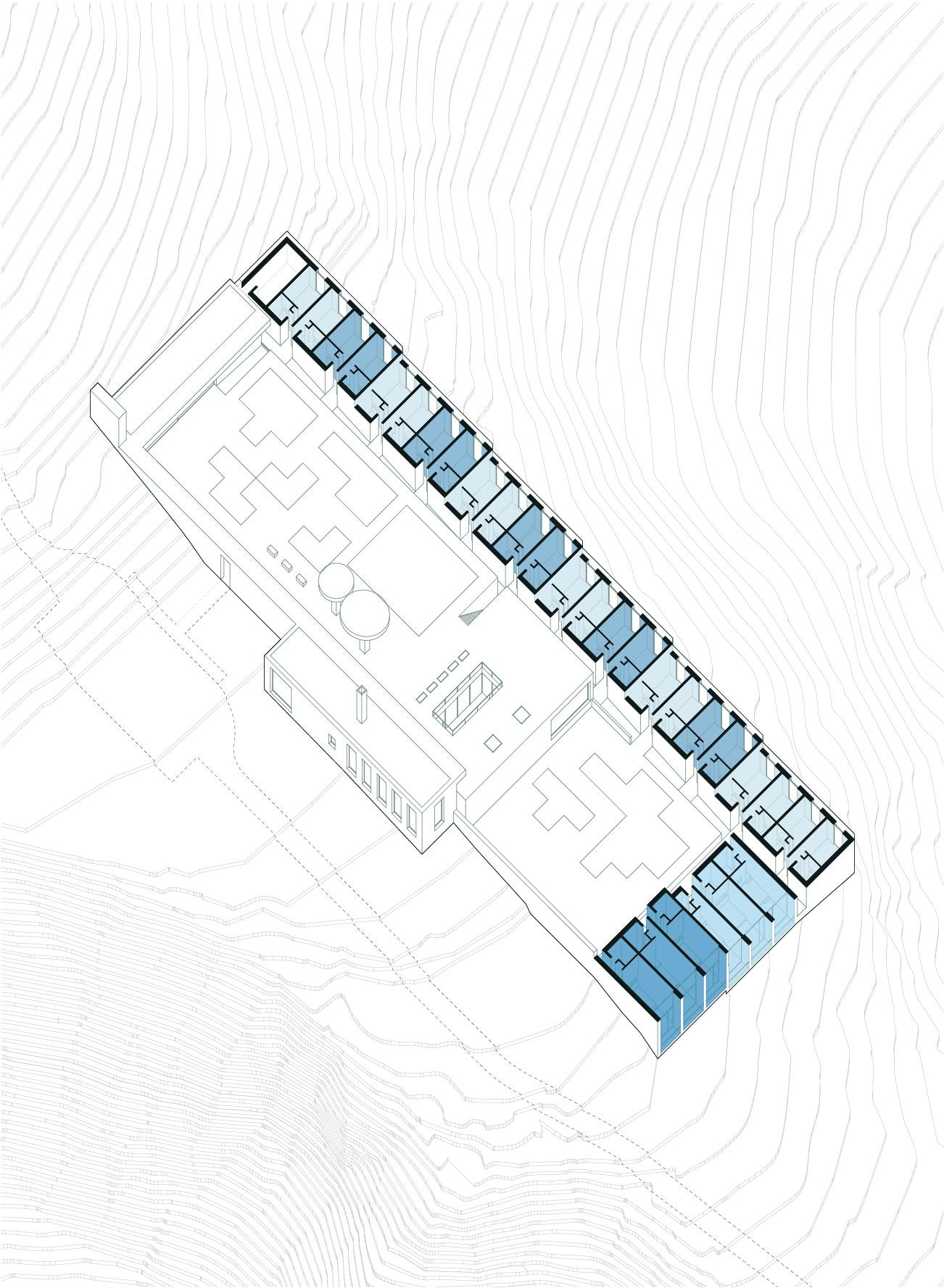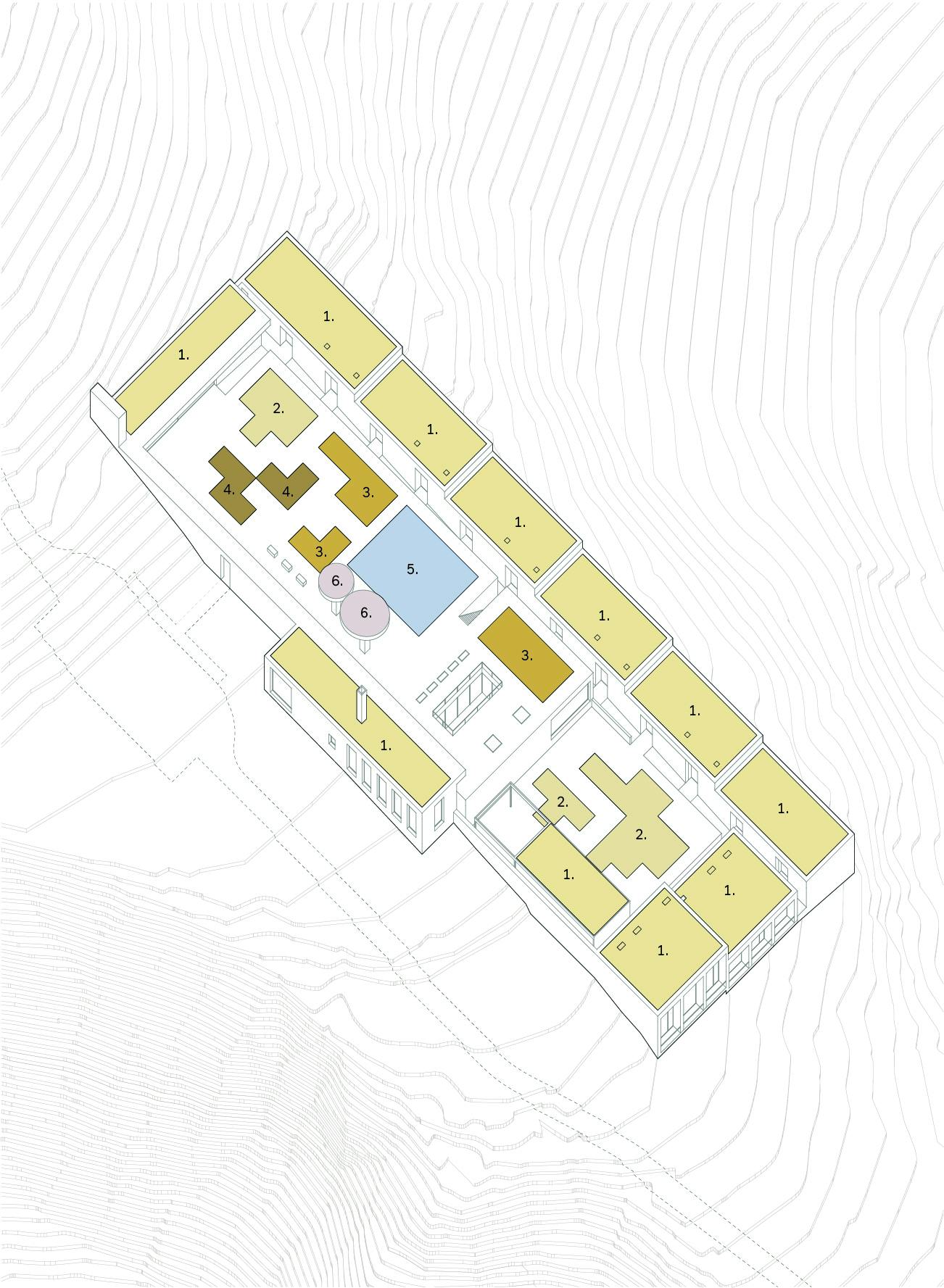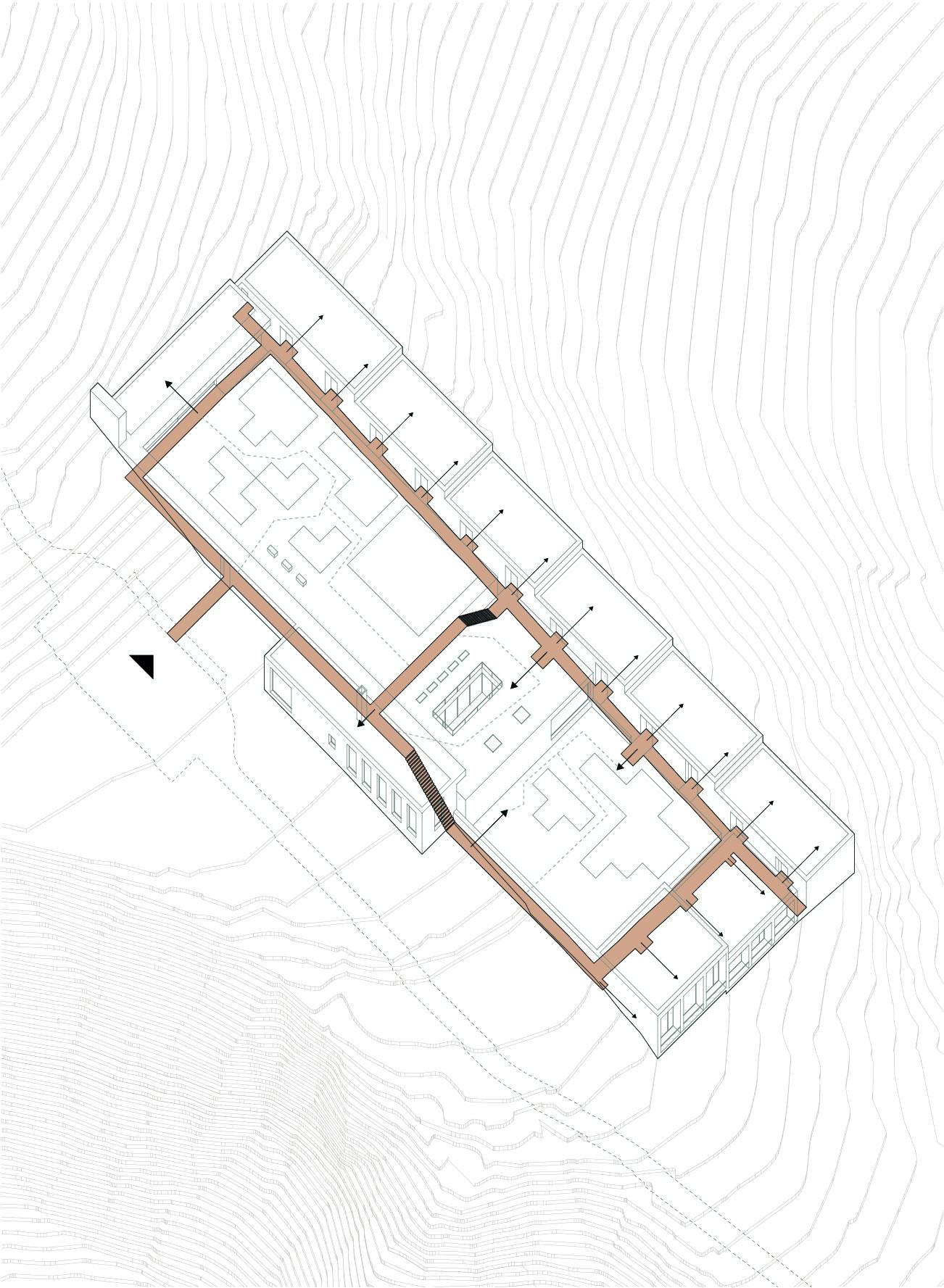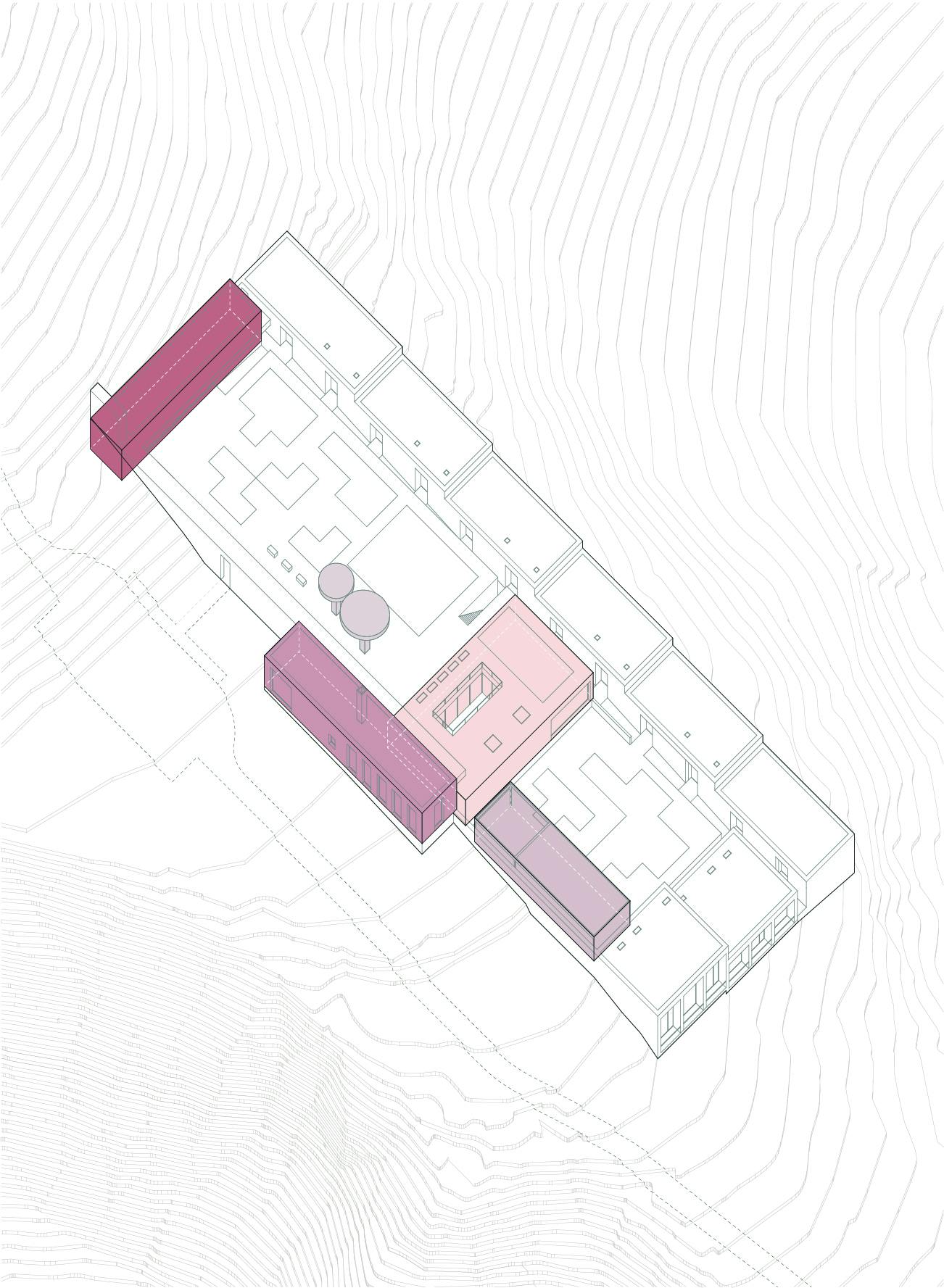Fundo Moray Center
Cusco
The Fundo Moray Center can be an important contribution to the ongoing rediscovery of the Peruvian landscape, its history, and its potential role in the future of the nation. This has been our starting point - a project that enables interactions with the landscape, unfolding the full potential of the site.

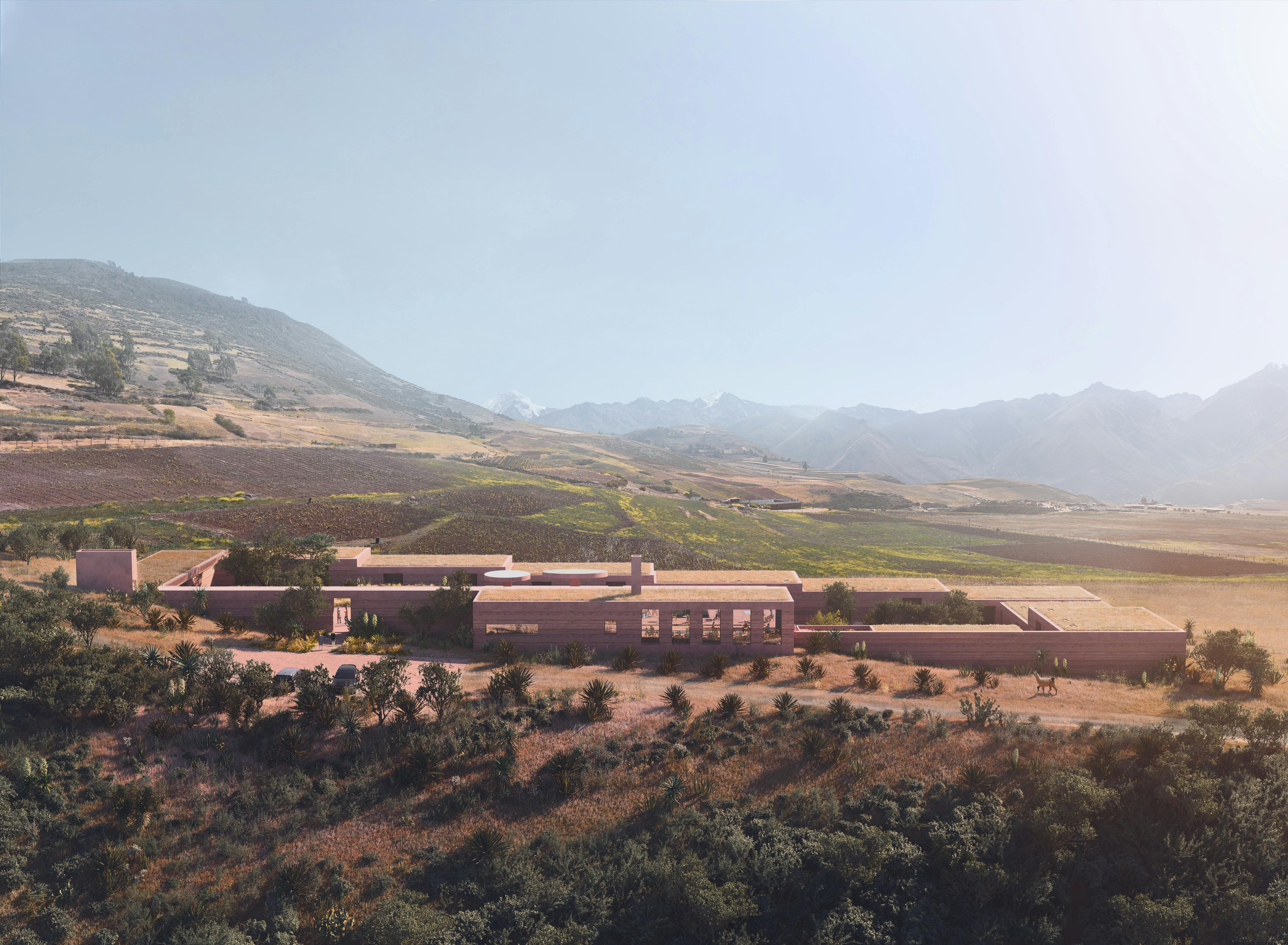



TYPE
Architecture
DATE
2019
STATUS
Invited competition
TEAM
Are Hagen, Christopher Caleb Hansen, Joao Amaro, Espen Røyseland, Øystein Rø
CONSULTANTS
Ivan Tamayo Ramos (rammed earth construction)
Jemima Garcia-Godos, Associate Professor - University of Oslo (Peruvian history)
CLIENT
Confidential
Key to the spatial experience is to be in the landscape, to experience the outdoor through the day and the seasons. A visit here is a learning-based experience where the line between the researcher and guest is blurred. Here meetings between local and global networks can happen. Furthermore, it has been important to propose a project that respects the Moray site and its sensitive and protected landscape while at the same time representing a strong architectural idea derived from the specificity of the site and the re-interpretation of pre-Hispanic traditions.
The design is based on sustainable principles such as local production, local materials, local service providers, and local supply of energy and water. We imagine the centre to be as self-sustained as possible. The internal courtyard provides three productive zones; The agricultural zone, the solar zone and the water collecting zone. The remaining roof surfaces are grown with natural vegetation, contributing to biodiversity of the site as well as water retention. Underneath the reflection pool a water cisterna for rainwater collection is located, supplementing the wells. The roof surface of the parasols is suggested covered with photovoltaic cells. Other roof surfaces could also be considered for solar energy production. Misminay and Anccoto communities represent an expanded productive field with local farmers and artisans.
The building is a combination of rammed earth walls and pigmented concrete roofs and foundation, together forming a visually monolithic structure. We imagine using excavated earth from site, reducing the environmental impact, lowering costs and easing logistics, as well as linking the building aesthetically to the surrounding colours of the landscape. It is expected the building can be founded directly on the bedrock. The courtyard is proposed with a concrete paving with zones of gravel and vegetation. Roofs have vegetation surfaces.


